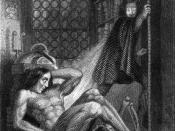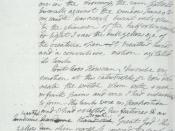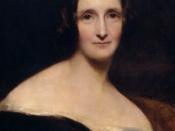Mary ShelleyÃÂs ÃÂFrankensteinÃÂ, WhaleÃÂs ÃÂFrankensteinÃÂ and Percy ShelleyÃÂs ÃÂAlastor; or the spirit of solitudeÃÂ are all Gothic texts that portray the values and attitudes of their time. Through a number of literary devices each composer shows many similar and different themes using gothic conventions. Despite their central similarities it is clear that each text is a response to a specific context. This essay will seek to highlight the shift in contexts, values and attitudes presented in these texts.
An element in all three texts that has been influenced by the Gothic genre is the consequences of the obsessions of their respective protagonists. In Mary ShelleyÃÂs text, the protagonists are seen to be destroyed by the ÃÂunremitting ardourÃÂ with which both of them ÃÂpursued (their) undertaking.ÃÂ By using the Gothic concepts of duality and binary opposition Shelley portrays two very different characters with one disturbing personality trait ÃÂ that is their hubris and unbridled ambition.
Victor becomes physically ill because of the ÃÂdays and nights in vaults and charnel houses,ÃÂ the ÃÂincredible labour and fatigueÃÂ finally taking its toll upon his body. This shows the dangers and consequences of VictorÃÂs ambition and how he is destroying himself and his links with his friends. WaltonÃÂs obsession is indeed the same but his search for knowledge comes through exploration and he needlessly puts the lives of his crew at risk in order to satiate this thirst. This concept comes from ShelleyÃÂs own fears of the industrial revolution and that the application of science can lead to unintended consequence.
Henry FrankensteinÃÂs ambition in WhaleÃÂs text is also shown as destructive throughout the film. He is destroying himself psychologically; shutting himself away from the care of his family and friends in order to follow a corrupt dream of creation. Whale shows the context...


